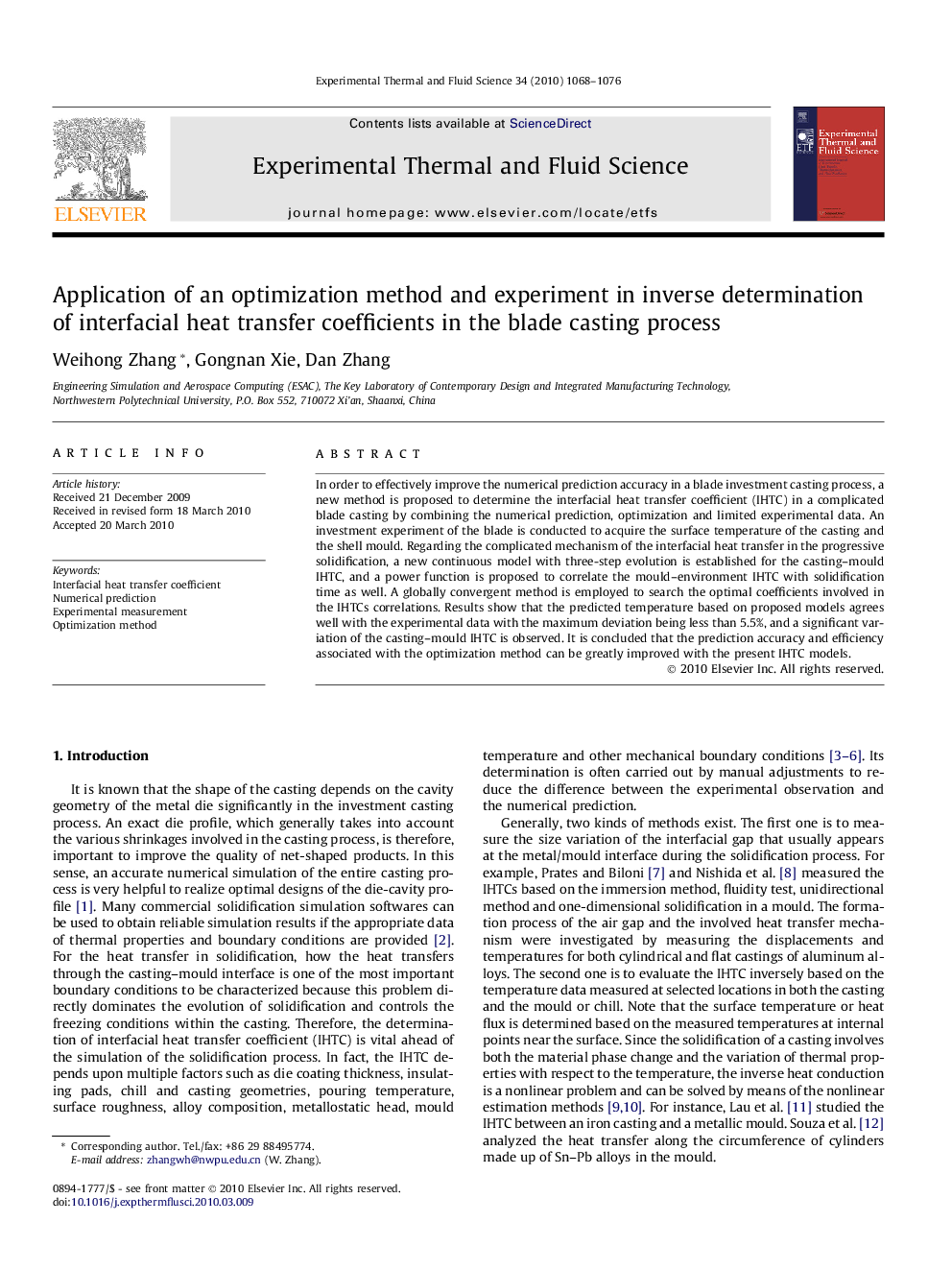| کد مقاله | کد نشریه | سال انتشار | مقاله انگلیسی | نسخه تمام متن |
|---|---|---|---|---|
| 652470 | 885022 | 2010 | 9 صفحه PDF | دانلود رایگان |

In order to effectively improve the numerical prediction accuracy in a blade investment casting process, a new method is proposed to determine the interfacial heat transfer coefficient (IHTC) in a complicated blade casting by combining the numerical prediction, optimization and limited experimental data. An investment experiment of the blade is conducted to acquire the surface temperature of the casting and the shell mould. Regarding the complicated mechanism of the interfacial heat transfer in the progressive solidification, a new continuous model with three-step evolution is established for the casting–mould IHTC, and a power function is proposed to correlate the mould–environment IHTC with solidification time as well. A globally convergent method is employed to search the optimal coefficients involved in the IHTCs correlations. Results show that the predicted temperature based on proposed models agrees well with the experimental data with the maximum deviation being less than 5.5%, and a significant variation of the casting–mould IHTC is observed. It is concluded that the prediction accuracy and efficiency associated with the optimization method can be greatly improved with the present IHTC models.
Journal: Experimental Thermal and Fluid Science - Volume 34, Issue 8, November 2010, Pages 1068–1076